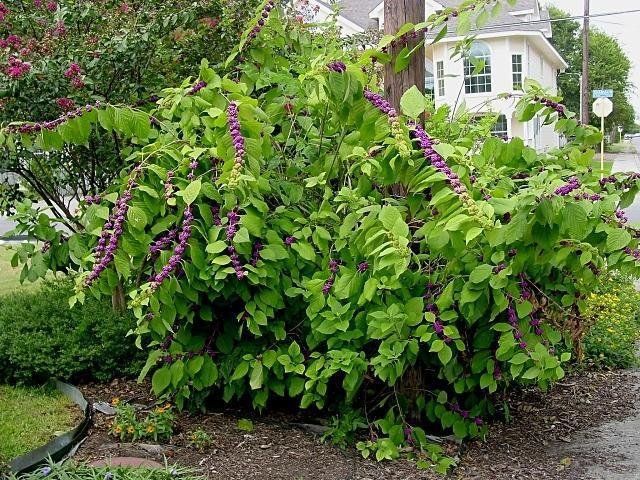Top Beautiful Fall Plants For Your Garden
These 5 beautiful plants to have around this fall are in vibrant shades of yellow, orange, red with late blooms providing pops of colour. Between delicious fall produce, trees that turn vibrant shades, and late blooming flowers, they provide much-needed pops of colour before the cold.
#1 Witch Hazel

This bewitching tree will capture your attention, first with flaming yellow leaves that drop one-by-one throughout the fall, and then with unusually shaped, vibrantly-colored blossoms.
The blossom’s bright yellow petals are string shaped, jutting out every which way from a scarlet center. They look otherworldly and magnificent, especially when surrounded by similarly hued trees, or in front of a backdrop of trees with falling red and brown leaves.
Not only is witch hazel beautiful, but it also emits a powerful fragrance that’s surprisingly spicy. It will drift over your whole year, tantalizing those who enter it.
Witch hazel grows best in USDA Grow Zones 3-9, in a spot with full sun or partial shade. These low maintenance plants can grow to be an impressive 8 – 20 feet tall, or you can prune them back and down so they look more shrub-like.
For some tips on how to take care of your witch hazel, check out this Fall/ Winter Tree Care Webinar!
#2 New England Aster
These late summer through early fall bloomers will provide a pop of pink, purple, or blue to your yard in autumn.
With fabulous fluorescent colors, thin long petals, and a bright yellow center, these beautiful blossoms are absolute show-stoppers. They’ll especially stand-out in the fall when most other plants are transitioning to red, yellow, and brown color schemes.
New England aster flowers have a faintly spicy smell similar to turpentine when crushed. Don’t let the smell deter you though, the exquisite flowers more than make up for it.
Grow them in well-drained, moist soil in a spot with full sun. Pinch back the stems in the summer to delay their blossoms in the fall. That way you can ensure that they’ll provide the necessary pop of color you crave when your summer plants start dying back.
They look particularly pretty as border plants along roadsides, tree lines, or pathways, but also can be successfully grown as container plants.
#3 Verbena

What makes verbena such an incredible fall plant is its beautiful long-lasting flowers, which bloom from early spring through most of the fall.
This extremely long bloom time stems from verbena’s admirable tolerance against cold. Although these flowers may look delicate, trust me, they’re not.
Verbena is so hardy, it’s tolerant of weather as cold as 15 degrees Fahrenheit, often continuing to flower after the first frost. I can’t even tolerate weather that cold.
These trailing plants have elegant, dark green leaves, and clusters of gorgeous flowers. The colors of verbena range from light purple, to deep violet, to dark blue, to even light pink. There are over 250 verbena species which all feature radically different colors.
Verbena grows best in acidic soil, in a spot with full sun, in USDA Grow Zones 5 – 11.
They make great container plants or look wonderful when planted as shrubs along the side of homes. My favorite verbena look is when it spills out of containers, whether that’s a garden planter, container box, or a hanging plant stand.
#4 Beautyberry

It’s hard to say what’s more beautiful, the delicate-looking lilac flowers that bloom from beautyberry in the summer, or the bright purple berries that the shrub produces in the fall.
The berries that beautyberry produces ARE remarkably beautiful. They are plump, vibrantly purple, and grow in bulbous clusters.
They look especially gorgeous in contrast with the plant’s light-green leaves which grow along long branches that stretch out from the plant’s center.
The berries often last through the fall into the winter. If your berries are strong enough to endure the first couple freezes, your shrub will become all the birds in your neighborhood’s favorite new snack spot, which could be a positive or negative thing depending on how you feel about flying visitors frequently coming to your yard.
Beautyberries prefer moist, well-drained soils that are full of organic matter. Plant them in a spot with full sun, in USDA Grow Zones 5-8. If planted in the proper conditions, your beautyberry will not require fertilizer or pruning.
Beautyberries are great for fall landscaping, looking wonderful as border bushes, in gardens, or when planted close to homes. They provide a notable pop of color amongst traditional fall foliage.
#5 Serviceberry

The elegant serviceberry tree provides a service to all of us when it blooms in the fall, its foliage bursting into outstanding oranges and ravishing reds.
By far, the most beautiful serviceberry variety in the fall is the aptly named “Autumn Brilliance” which takes the seasonal color show up a notch, with especially vivaciously vibrant colors.
Of course, the show of delicate white blossoms that serviceberry puts on in the early spring is also undeniably beautiful, but those pale-colored blooms in no way compare to this tree’s fantastic fall foliage.
Serviceberry’s oval-shaped leaves are unusual in their perfect shape and satisfying thickness. They aren’t huge, but neither is the serviceberry tree which typically only grows to be 10 – 20 feet tall, although in the wild they can reach heights of up to 40 feet.
Of course, if you grow your serviceberry in your yard, it will probably be in the 10-20 feet range, but it still needs lots of room. These trees look great when pruned down to being shrubs, as border trees, or when they are grown along fence-lines.







Leave a Reply
You must be logged in to post a comment.